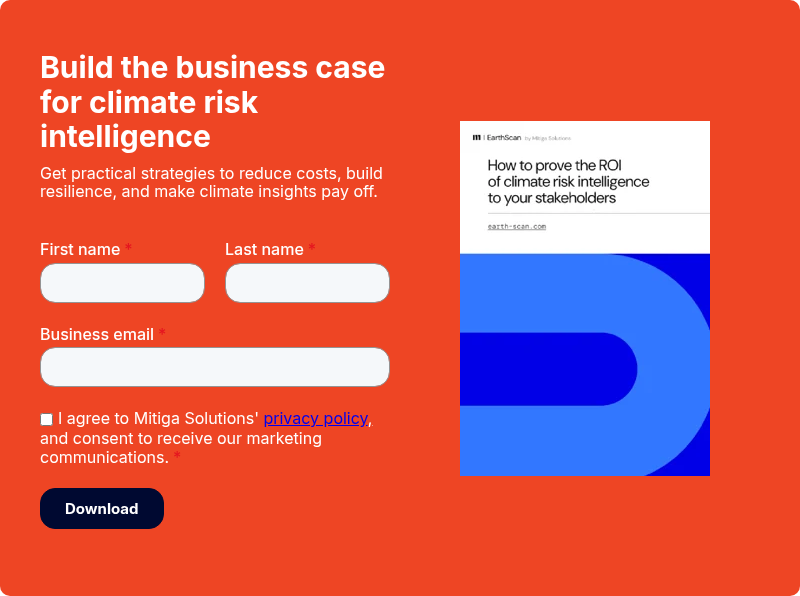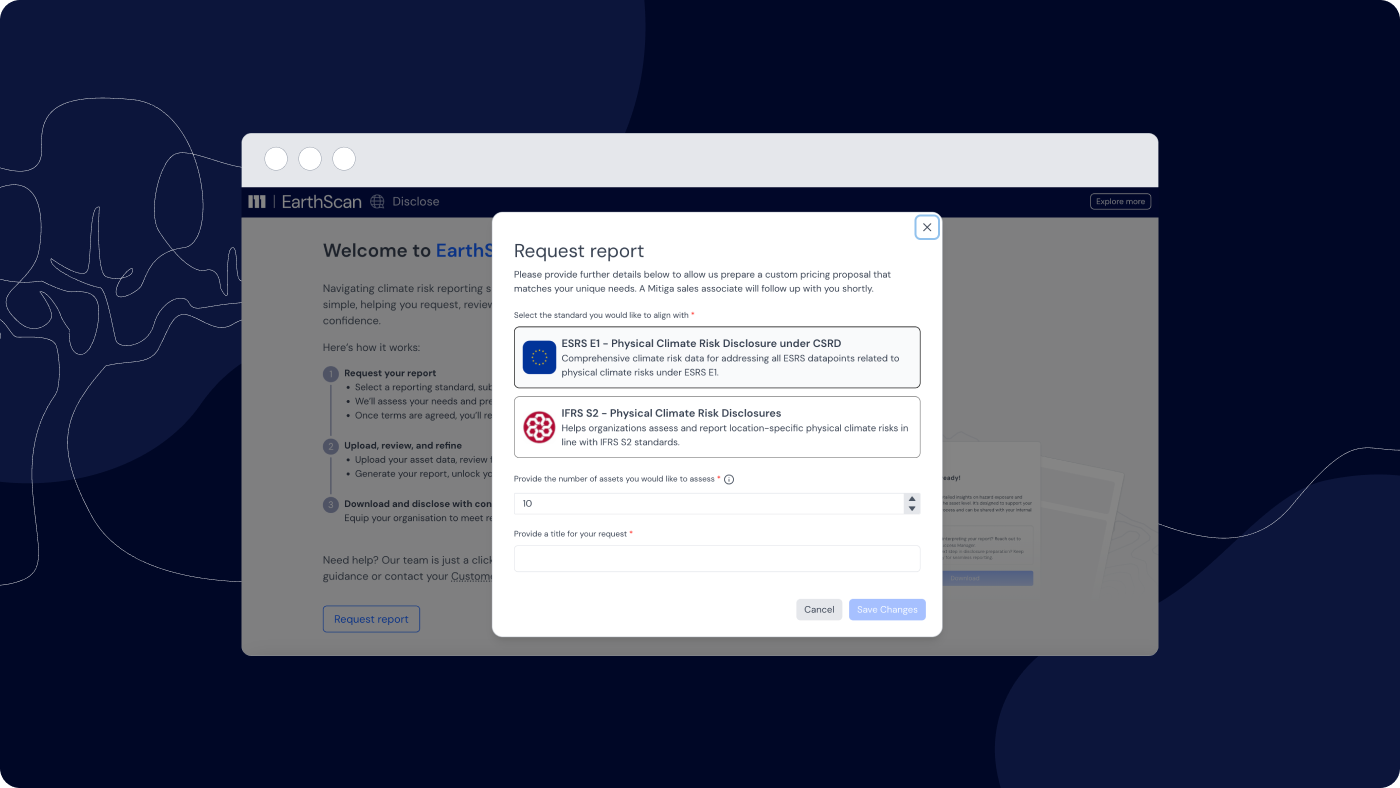A Guardian article about the UK’s newly appointed Business and Energy Minister, Jacob Rees-Mogg caught our eye. His “devotion to fossil fuels” and claims of “climate alarmism” raised eyebrows, of course. But his claim that it is “unrealistic for scientists to project future changes to the climate because meteorologists struggle to correctly predict the weather” really grabbed our attention.
Why? Because everyone knows that weather and climate are not the same thing. Then, we realized that, at Mitiga, we are grounded in science, and that maybe this is not something widely known after all.
So, we asked our scientists and climate experts to help explain the difference – and why it’s possible to ‘realistically’ project future changes to the climate.
The weather versus the climate
Weather forecasts predict weather events for a specific time and location, such as a Wednesday rain shower in San Francisco, or storms across the Northwest of England over the long weekend. These are based on specific characteristics of weather like temperature, barometric pressure, wind speed and precipitation (rainfall, snowfall).
Weather forecasting uses computer modeling to estimate exact weather changes over short time scales based on ‘initial conditions’. Think of this like using a snapshot of the weather as a starting point. Predictions can range from a few hours to a few days.
The accuracy of weather forecasts depends on how well computer models represent the complex physical laws that govern the atmosphere and the quality of measurements capturing information on initial weather conditions. The further out in time from those initial conditions you go, the less accurate a forecast becomes.
Scientists looking to understand how climate might change in the future aren’t looking to capture exact weather conditions, which can change from hour to hour. They want to understand how our climate system changes over time, and what that means for typical weather patterns and the likelihood of extreme weather events.
Rather than forecasts, they use climate projections - statistical distributions of weather patterns over a longer timespan (at least 30 years) is the time period recommended by the World Meteorological Organization.
Climate projections forecasts simulate the same atmospheric fields as weather forecasts – e.g., temperature, wind speed and precipitation – but, additionally, represent the ocean, which varies in a very slow and persistent way.
Compared with the fast weather fluctuations of the atmosphere, the slowly varying ocean exhibits strong "memory," thus providing an important source of predictability in the climate system beyond weather time scales.
The resulting atmosphere-ocean climate models are an important tool to look at how the climate system behaves over time given certain conditions, such as the amount of carbon dioxide (CO2) in the atmosphere. These changes to the climate system drive the weather events we experience today, such as extreme heat waves.
projections therefore are designed to capture the long-term changes in our climate system, such as those induced by human activity and the release of greenhouse gases (GHG) into our atmosphere.
The global climate models are increasingly becoming more sophisticated and more realistic. The latest type of climate models that are state-of-the-art, in addition to the physics, incorporate biological and chemical processes.
Such models represent, for example, not only how the land surface vegetations and ocean’s phytoplankton are affected by climate change and rising temperatures, but also how these biological processes alter the atmospheric CO2 concentrations by altering the carbon natural sources or sinks.
These comprehensive Earth System Models allow for a more realistic representation of the evolution of the surface climate by helping researchers determine how the biosphere shapes the Earth's response to rising GHG emissions.
What’s the difference between climate and weather?
A useful analogy is to consider a pan of boiling water. A ‘weather forecast’ would predict the exact location of each air bubble that reaches the surface. A ‘climate forecast’ predicts how the temperature of the entire pan changes with time given the heat source.
The climate prediction, in this example, is based on statistics, or averages, whereas the weather prediction requires knowledge of each bubble. Climate change can be seen as increasing the temperature dial on the stove.
Why we need climate projections
The Earth’s climate is a ’chaotic system’ marked by ‘sensitive dependence to initial conditions.’ This means that even very small changes can quickly and radically change the way that the system develops over time. This does not mean that events affecting the Earth’s climate cannot be predicted.
We can combine historical climate data from the earth system’s observations and climate models to understand how likely an event is and where it might happen. For example, climate scientists can anticipate that the risk of a heatwave in the UK will become increasingly likely over the next 20 years, as a result of climate change, but are unable to pinpoint the exact day, time, or location it will occur.
Imagine you are a city water manager. You need to know things like: Will there be enough rain to replenish the aquifers and supply adequate drinking water? How likely it is that several days of heavy rainfall might exceed the capacity of the city's water drainage system and cause flooding?
While you might use weather forecasts to see how much rain is expected to fall on any one given day, you need climate projections to develop long-term plans that meet the city’s need for water resources. Your planning colleagues need this information to decide whether the city’s infrastructure needs adapting to cope with more frequent heavy rainfall events.
Beyond short-lived weather events, predictions of climate at seasonal time-scales aim at capturing the natural fluctuations in the climate system with such distributions, rather than day-to-day weather changes. By looking at regular climate patterns that act as predictors, such as El Niño Southern Oscillation, city planners can estimate how much rain is expected over an entire season.
Climate projections take this further by taking into account how the factors that govern our climate system, such as the amount of CO2 in our atmosphere, might change. City officials can use these same climate projections to plan and build infrastructure that can withstand, for example, modified rainfall patterns caused by climate change over the coming decades. For example, they might install flood mitigation defenses in the case of extreme rainfall, or rainwater capture systems in the case of drought.
How climate change affects the weather
How does climate change affect the weather? Sport offers a good analogy here. Imagine taking a putt in golf, where the hole represents an extreme weather event. In this example, the ‘climate’ is the measure of the distance from the hole that you take the putt.
Consider ‘extreme weather’ as the possibility of making the putt. With a warming climate due to carbon emissions, we are moving the starting position much closer to the hole, making it much easier to make the putt. The hole, or extreme weather event, might be something like record-breaking temperatures due to heatwaves, such as those we have recently seen in the U.S. and U.K, or flooding, as we’ve seen in Pakistan.
Let’s go into deep science mode for a moment. We know that increased greenhouse gas emissions leads to an increase in temperature. The Clausius-Clapeyron relation tells us that warmer air retains more moisture.
This converts into exacerbated rainfall. We saw an example of this in 2017, when Hurricane Harvey picked up a considerable amount of moisture from the Atlantic Ocean and downpoured it on Texas. While climate change and weather variability are different, they are closely related.
The past gives us confidence in projecting future climate events
Over the last few decades, climate scientists have gathered thousands of data points on how the Earth’s climate behaved in the past using geological records stretching back millions of years. They have found that changing levels of atmospheric CO2 are always accompanied by changes in the Earth’s climate. When CO2 levels are high, climate records indicate a world with hotter temperatures, higher sea levels and smaller ice sheets.
According to geological records, the last time CO2 levels matched the present day (417 parts per million or ppm) was at least three million years ago. If we continue business as usual activities and policies, and take no further measures to reduce carbon emissions, the science is clear on the outcome.
By 2050, we could reach CO2 levels which were last seen on Earth roughly 14 million years ago – a time when there was no permanent ice sheet on Greenland. Today, the Greenland Ice Sheet is a critical part of Earth’s ecosystem, and even a small amount of melting causes problems for coastlines.
Scientists are concerned about the impact of climate change on its stability, finding recently that a 27cm of global sea-level rise from Greenland’s melting ice is already locked in – meaning that this sea-level rise is inevitable, placing low-level coastlines at greater risk of flooding and storm surges.
Climate projections are possible
It seems that our team of scientists and the UK’s new Business and Energy Minister agree on at least one thing: it’s difficult for scientists to project future changes to the climate, but not impossible.
Climate models are constantly and vigorously evaluated based on their ability to simulate past events; such climate projections of the known past (called hindcasts) have demonstrated that climate models generally are quite skillful in projecting future warming. Such studies of hindcasts provide strong evidence that climate events are in fact predictable
When it comes to distinguishing between weather and climate, weather generally covers short and specific timeframes and locations, while climate focuses on trends and statistical ups and downs over decades. They are different, yet related. More like first cousins than twin siblings.
Thank you to Dr. Eleftheria Exarchou, Dr. Laura Zamboni, Dr Helen Beddow and Dr. Gillian McCusker for their contributions to this article.




